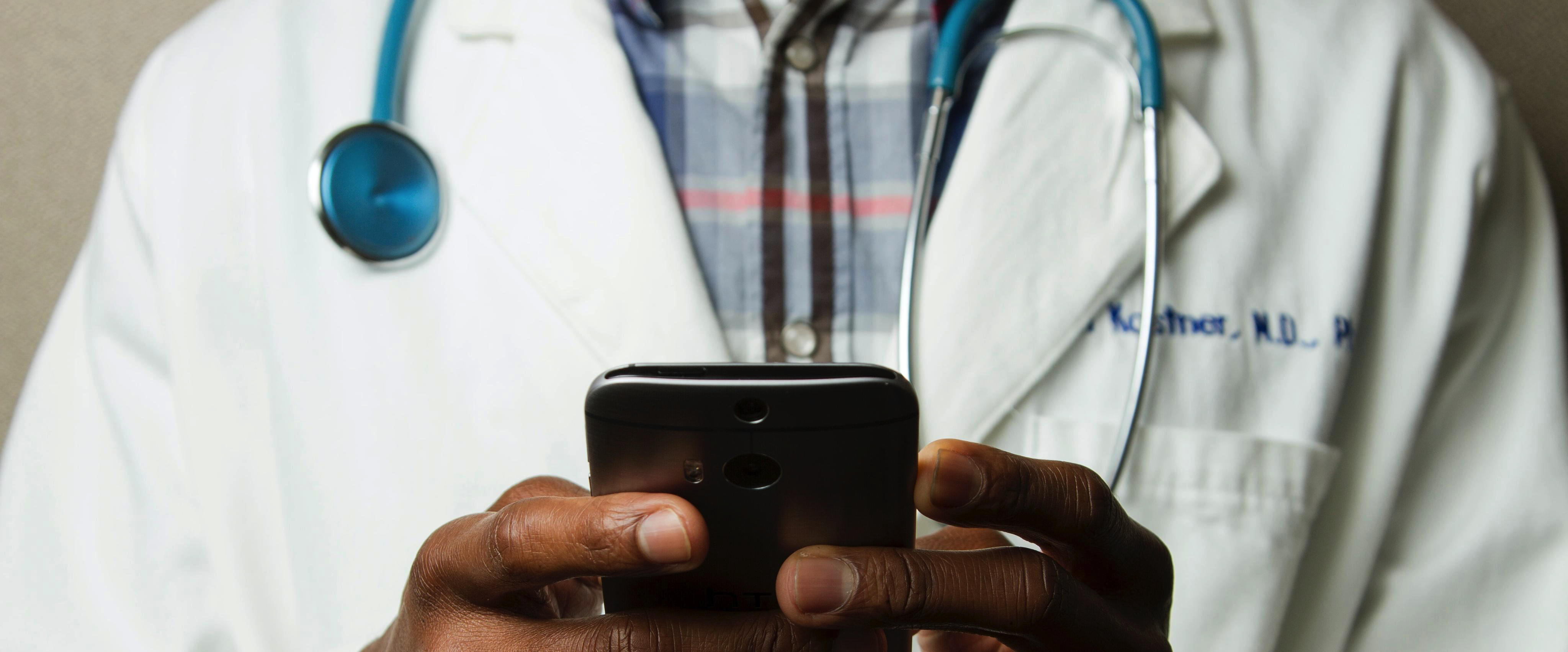How Autonomous Mobile Clinics can Transform Healthcare in Least Developed Countries
By: Ao Kong, United Nations & Shaoshan Liu, 2022 Team Lead, Asia Geography Team, 2022 IEEE Entrepreneurship Steering Committee
-
At least half the world’s population lacks access to essential health services and up to a third will remain underserved by 2030.
-
Autonomous mobile clinics with ‘AI doctor’ functions may be key to reaching universal health coverage, as outlined in UN Sustainable Development Goal 3.
-
Piloting such clinics in the least developed countries through a demand-driven approach and multistakeholder partnerships will help set industry standards and scale up the benefits.
The United Nations (UN) Sustainable Development Goal 3, or SDG 3, declared a universal health goal to “ensure healthy lives and promote well-being for all at all ages” by 2030. The way to its realization is through “universal health coverage (UHC) and access to quality health care, (and ensure) no one must be left behind”. [*Note: Shaoshan Liu is the 2022 Team Lead of the Asia Geography Team on the 2022 IEEE Entrepreneurship Steering Committee.]
However, to date, at least half of the world’s population lacks access to essential health services, and at the current pace, up to one-third of the world’s population will remain underserved by 2030.
 As identified by the UN General Assembly under the theme ‘Universal Health Coverage: Moving Together to Build a Healthier World‘, “many health systems are not sufficiently prepared to respond to the needs of the rapidly aging population… as well as financial hardships associated with high prices of health products, continue to impede progress towards achieving universal health coverage”.
As identified by the UN General Assembly under the theme ‘Universal Health Coverage: Moving Together to Build a Healthier World‘, “many health systems are not sufficiently prepared to respond to the needs of the rapidly aging population… as well as financial hardships associated with high prices of health products, continue to impede progress towards achieving universal health coverage”.
Thus, acceleration of affordable and location non-restricted healthcare has become an urgent ask to upgrade public health systems and achieve the aims of SDG3.
Autonomous mobile clinics and ‘AI doctors’ could enable universal health coverage
Among the possible methods, autonomous mobile clinics (AMCs) and their potential to provide affordable universal health coverage have caught our attention at the UN Technology Bank for Least Developed Countries (UN Technology Bank), a UN entity mandated by the General Assembly to enhance science, technology and innovation for sustainable development in the world’s 46 least developed countries (LDCs), that are facing severe structural impediments to growth and account for less than 2% of world GDP.
Through our exchange with experts from the Institute of Electrical and Electronics Engineers (IEEE) and Johns Hopkins University, as well as social entrepreneurs, we recognize three main advantages that AI doctor-equipped AMCs possess in providing quality and low-cost healthcare.
First of all, autonomous driving allows medically-equipped vehicles to quickly navigate to places where healthcare services are hard to reach. Secondly, these mobile clinics allow healthcare access and knowledge sharing on-site, thus reducing access constraints.
Thirdly, the artificial intelligence (AI) doctors within autonomous mobile clinics, which can improve their functioning and accuracy through machine learning over time, could provide comprehensive screening, testing, and initial primary care diagnosis with minimum human supervision – thereby not only lowering healthcare costs but also enabling medical professionals to focus their attention and resources on needed cases, especially in underserved communities.
Why pilot autonomous mobile clinics in the least developed countries?
So, where can we start seeing the benefits? Counter-intuitive to the traditional thinking of “trickle-down” effects of technology, it is possible to reach scalable outcomes by piloting clean energy-powered AMCs to provide primary care to least developed countries, starting with a three-pronged approach.
a) Piloting AI doctor function by treating prominent endemic diseases.
b) Training autonomous vehicles to navigate remote and rural landscapes.
c) Developing context-relevant solutions with local communities and health workers to form a healthcare delivery package that connects the in-vehicle diagnosis, patients’ medical records, and referrals to telemedicine or in-person care as the next step, when necessary.
The pilot experience in LDCs will benefit the local communities and also in return help improve the autonomous mobile clinic function and diagnostic accuracy with the purpose of eventually setting new technical and industry standards, especially in the following four technical areas:
-
Autonomous driving: improved Level 4 autonomous driving with a fully drive-by-wire chassis with failover backup systems to deliver healthcare services by order.
-
Telemedicine: smooth functioning of two categories of data communication – healthcare sensing data and video data stream – for in-vehicle healthcare services. Healthcare sensing data involves the transmission of raw sensing data collected from healthcare sensors, such as imaging devices, whereas video streams allow interactive communication between the patient and the remote doctor.
-
Medical equipment and tests: united manufacturing standards of medical equipment to provide a seamless in-vehicle testing experience.
-
Integrated care and referral: connecting electronic health records to enable integrated care and the training of AI doctors.
A demonstration of such a system can be seen in the following graphic:
Implementation, design, and scaling up of pilots in the least developed countries
To launch a pilot, first of all, a good approach is to focus on one or two endemic diseases for AI doctors to diagnose and treat in a selected country.
For instance, dengue fever is one of the leading tropical diseases, however, can be diagnosed by AI doctors, by measuring the patient’s body temperature and applying questionnaires and computer vision solutions.
Based on a treatment process suggested by the US Centers for Disease Control and Prevention, the AI doctor could prescribe dengue fever patients with supportive care such as acetaminophen and tepid sponge baths to control fever. Targeting these straightforward endemic diseases could bring in quick wins and enable technical adjustment at an early stage.
Secondly, experiment with using AI doctors on tablets equipped with low-cost sensors, such as temperature sensors, to perform basic diagnostics. These AI tablets, when mass-produced, can be made as affordable as less than $100 a piece to provide cost-effective solutions, which are essential for scaling up.
Thirdly, streamline and standardize this hybrid healthcare process. For example, once the AI doctor has completed diagnostic tests, if the results point to identified endemic diseases such as dengue fever, corresponding medicine will be prescribed; otherwise, the autonomous mobile clinic will transfer the records and refer patients to next-stage telemedicine or in-person care.
This process requires a clear division of labor and coordination between the AMCs’ operating system and local healthcare follow-ups, thus a priority to test and build through the pilot phase.
We recognize that to realize the benefits of science, technology, and innovation, especially in international development settings, multistakeholder partnerships are needed – with defined roles and responsibilities and guided by a long-term vision.
In forming a sustainable partnership, while the UN can provide enabling networks and coordination with potential pilot countries and serve as a knowledge broker to apply these experiences in various development settings, pilot projects have to be designed and realized through a demand-driven approach to ensure pilot countries’ leadership and commitment at every stage.
Meanwhile, to design with scalability, the partnering industrial and technology leaders will focus on improving the technical foundation of the AMC and AI doctor systems to develop an industry-standard that could be applied across contexts.
By exploring practical and innovative approaches and partnerships to pilot autonomous mobile clinics in the least developed country settings, our long-term vision is to establish empirical evidence and effective operational models that transform universal primary healthcare delivery that also leads to the realization of SDG 3.








